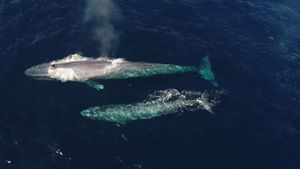Blue Whale
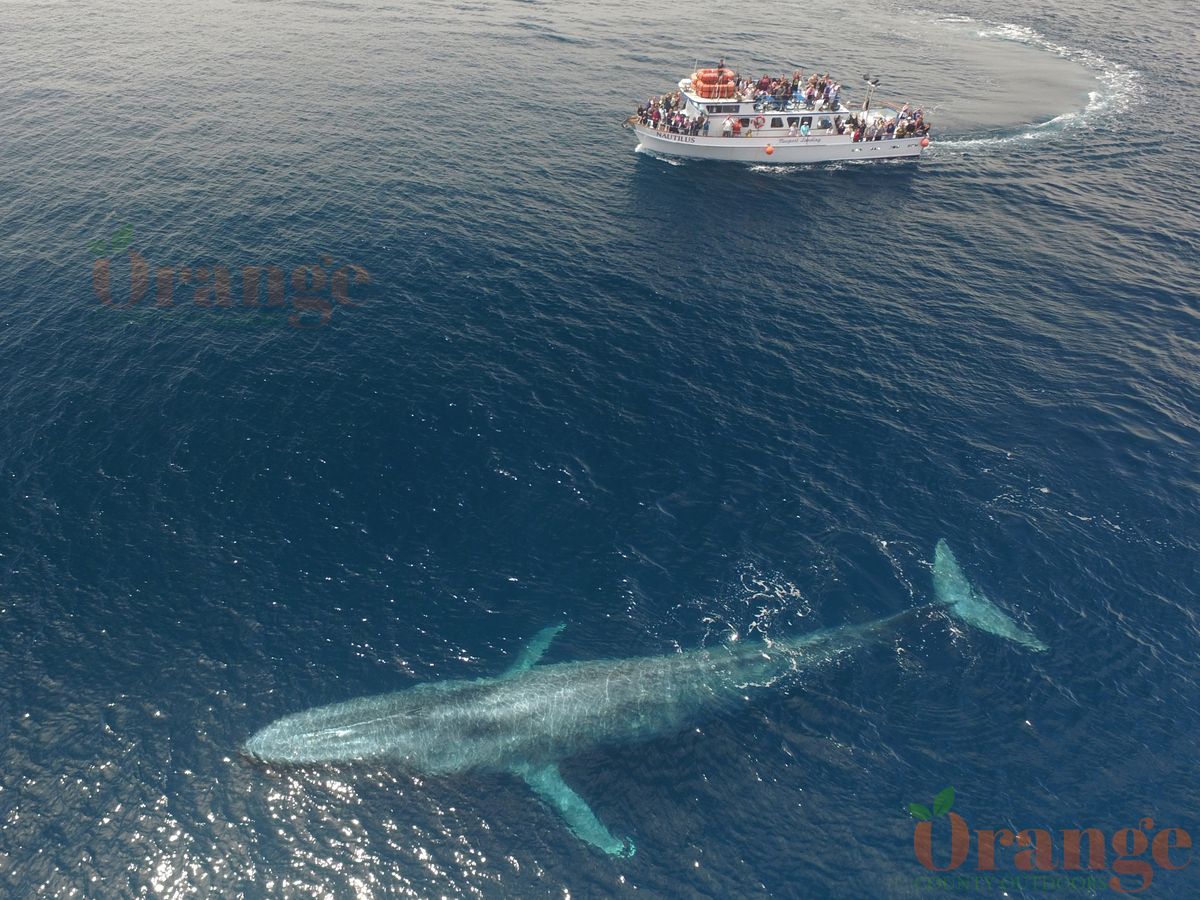
The Largest Animal To Ever Roam The Earth
Reaching up to 100 feet long in some parts of the world, they are truly an amazing sight to see. Named for the blue glow that appears when they are near the surface, not because of their actual color which is gray. Listed as an endangered species with a worldwide population estimated to be from 10,000 to 20,000, the North-Eastern Pacific population is the largest concentration with approximately 2,000-3,000 individuals which makes Southern California easily the best place in the world to see blue whales. They are considered one of the summer species of whales seen off the coast of Orange County along with humpback, fin, and minke whales. The reason they show up here along Southern California is to feed on vast amounts of krill, the duration of blue whale season for us here all depends on how long we have krill in the water, we can sometimes see the same blue whales stick around for weeks at a time and can sometimes see blue whales pass right through the area without stopping. June holds the best odds of seeing them here although we do have sightings of blues throughout the summer but every year tends to vary based on the abundance of krill, if we had lots of wind and underwater upwelling prior to June, there's a good chance there will be lots of krill for them that was pushed up by the underwater canyons/currents.
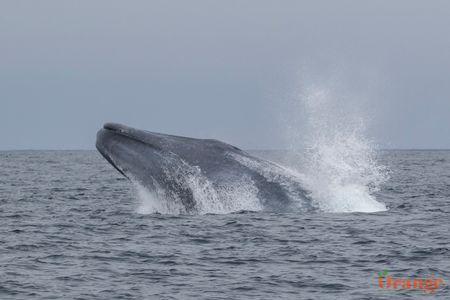
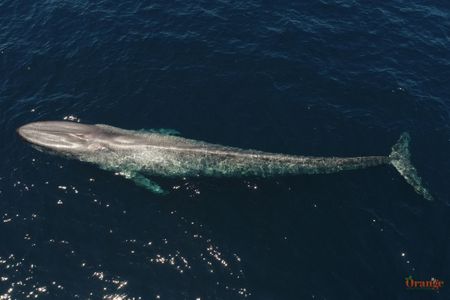
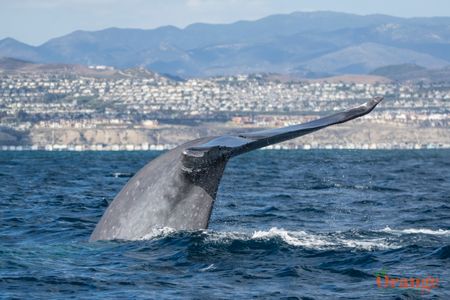
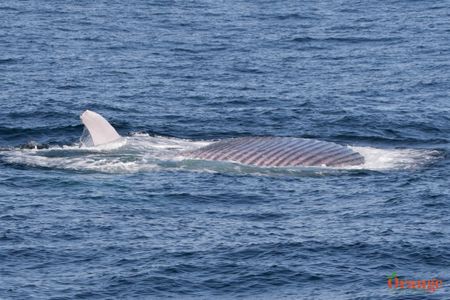

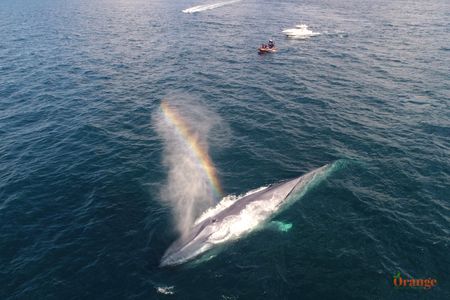
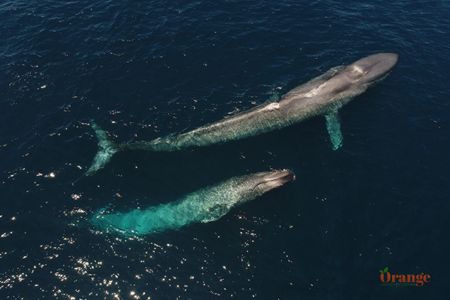

A Blue Whale's Breath
With such a massive animal comes with lots of oxygen needed to keep it alive. After holding its breath for up to around 25 minutes but typically 5-10 minutes, the whale will usually surface for several breaths while at the surface creating a large spout caused by the exhale of the lungs. This exhale can be up to 40 feet tall and be visible from up to 5 miles away depending on ocean conditions/visibility.
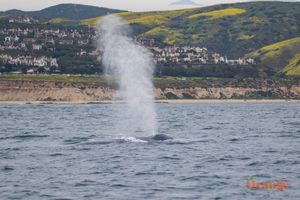

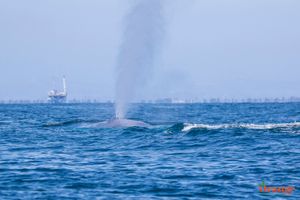

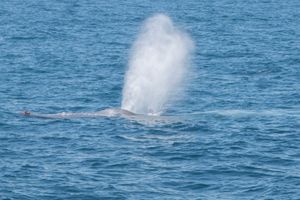
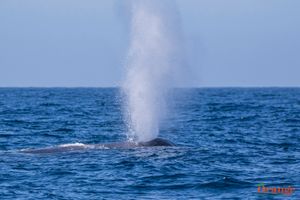
The Propulsion Of Such A Large Creature
In order for a blue whale to move through the water, it takes a massive tail (up to 25 feet wide) which is the same size or larger than some boats are long. The powerhouse of a blue whale, its tail, transferring up and down motion to the flukes allowing it to reach burst speeds of up to 20 mph.
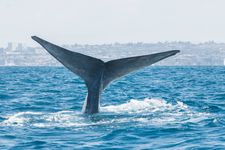
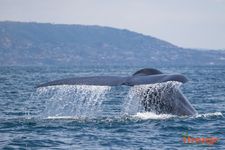
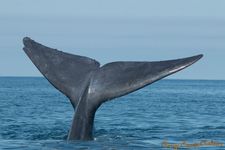
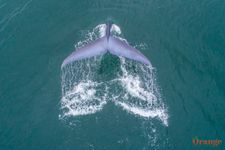
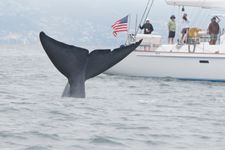
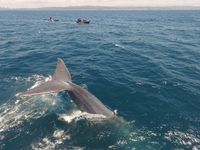
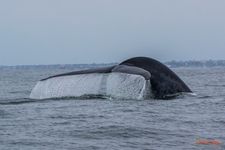
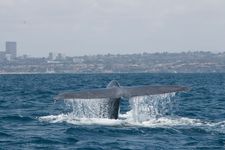
Did you know?
The first ever aerial of blue whales nursing was filmed 1 mile off the coast of Newport Beach? Filmed in the summer of 2015.
